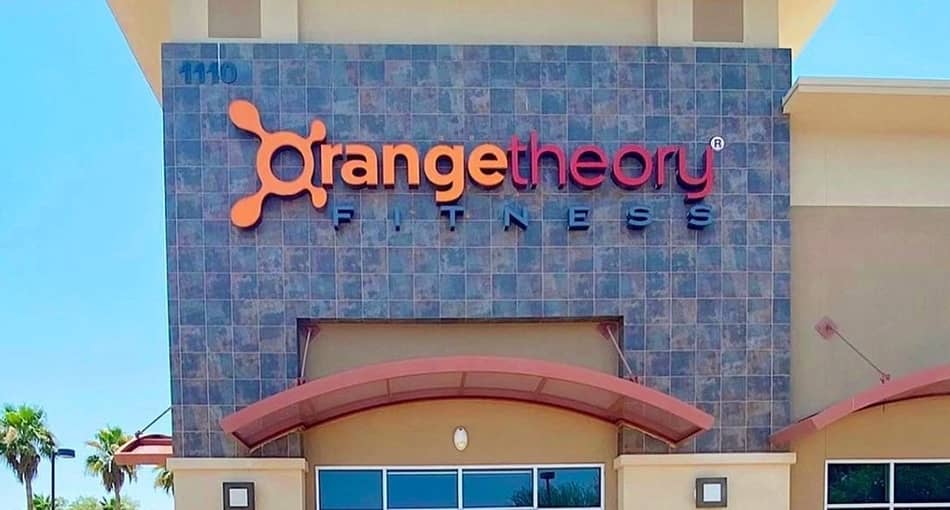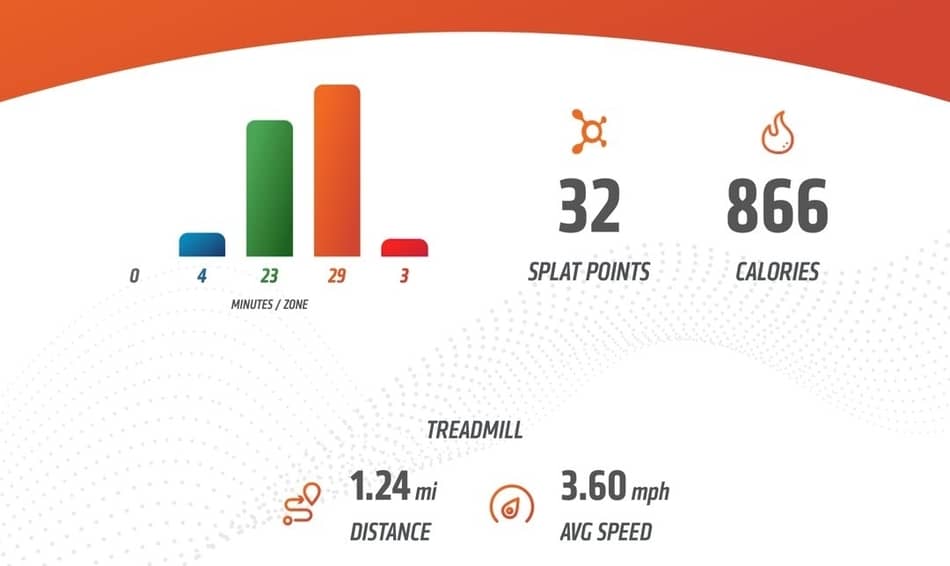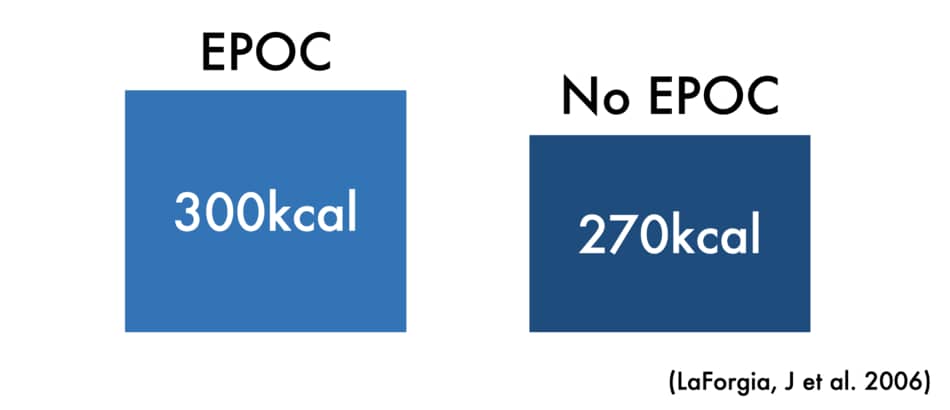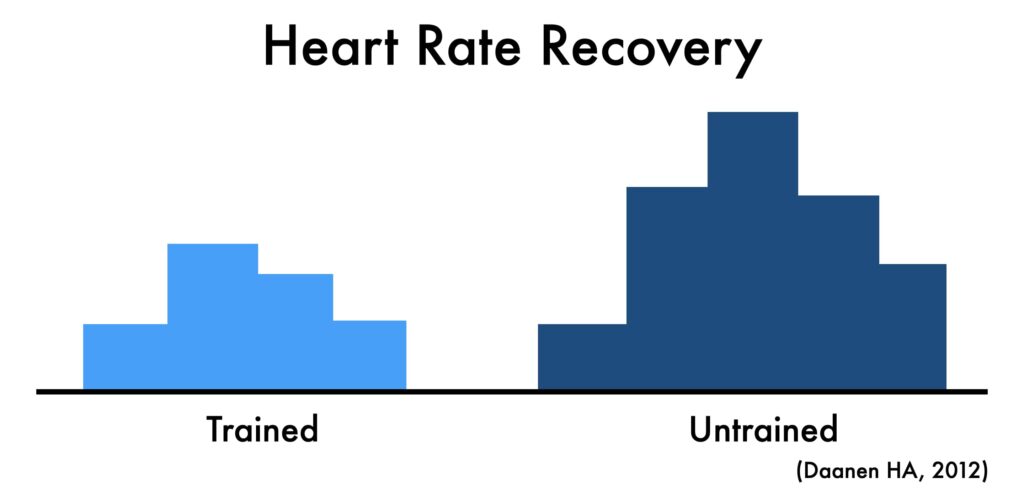Oganetheory Fitness came up with a clever way to ensure you understand your exercise intensity. Instead of using scientific jargon, they call it ‘Splat Points”.
Today I will help you understand what are splat points, do they really work, and (most importantly) the science behind heart rate zone training.

In general, Orangetheory Splat Points is the number that indicates how many minutes you exercise in the Orange and Red zone, the equivalent to heart rate zones 4 and 5. The goal of each OTF class is to spend at least 12 minutes at this intensity, which gives you 12 splat points and the promise of optimal calorie burn.
I will also touch on what can you do with splat points, as well as explain the limitations of this approach.
For example, this theory doesn’t take into consideration factors that can limit the results like differences in fitness level, training volume, body size, and individual age of people.
What are splat points in Orangetheory?
Orangetheory Fitness uses heart rate zones and splat points as a way to measure how hard you train.
You can think of splat points as a simplified way to describe and monitor how intense was your last workout, as well as compare the results from the previous classes.
Here’s how it works:
Wearing a heart rate monitor
Every time when I come to Orangetheory, I need to wear a heart rate monitor. In my first class, Orangetheory gave me two options.
The first was to buy my own OTbeat burn heart rate monitor (price $199) that I wear around my wrist (or arm).
The second option I could use my Apple Watch (or another smartwatch) that has already an HRM feature.
Keep in mind that you can attend the OTF class without wearing a heart rate monitor, but you won’t get to know your splat points.
Heart rate zones
Once I join the class, the instructor then explains to me the theory about heart rate zone training and splat points. The objective of each class is to get at least 12 splat points.
According to the Orangetheory coach, the goal of Splat Points is to maximize the effectiveness of the workout.
For example, 30 splat points mean I exercised for 30 minutes at the orange or red zone, which is considered the optimal intensity level for fat burn.
What happens when you get 12 splat points?
According to Orangethroty Fitness, when you get 12 splat points or more you will burn more calories and get better results by maximizing your EPOC and afterburn. You will also improve your cardiorespiratory fitness.
Look at the monitors
During the class, everyone’s name is displayed on the large TV screen together with my heart rate zone and the color of each zone.
The blue and green zones are considered aerobic, whereas the orange and red zones are considered anaerobic.
After the class
Immediately after the class, I can view my results on Orangetheory Fitness mobile app, or via email.
Orangetheory post-workout email
Below you can see the example of the email I received with my results after the last Orangetheory class.

Here’s the list of metrics that my email includes.
- The number of splat points
- Workout duration
- Calories burned
- Distance run
- Number of steps
- Average speed
- Average heart rate
- Peak heart rate
- Average % of max heart rate
How are splat points calculated?
Splat points are calculated based on the time you spend in the heart rate zone 4 and 5 during the OTF class, or outside of the class.
(Yes, my outdoor workouts also count towards splat points, as long as I’m connected to my OTF app.)
The intensity of these zones is the equivalent of exercising at 84-100% of the maximum heart rate. The heart rate zones 2 and 3 are not taken into splat points calculations.
Why do I care about Orangetheory splat points?
I love to monitor my fitness results and splat points are just another tool in my toolbox to know if I’m making progress (or not).
Plus, the promise behind getting more splat points is to stimulate the “afterburn” effect after a workout.
Orangetheory afterburn effect
The exercise afterburn effect is also known as EPOC (excess post-exercise oxygen consumption) or oxygen debt.
It is the temporary elevation in oxygen consumption (therefore, energy expenditure) after a high-intensity OTF workout.
According to the article published in the Journal of Strength and Conditioning Research, EPOC may contribute to greater fat loss sometimes reported after interval training compared with continuous steady-state exercise
You can think of the afterburn effect as the time when the body uses more oxygen to restore its normal metabolism.
How does Orangetheory afterburn work?
- During the Orangetheory workout (or any physical activity) your heart beats faster and you breathe heavily to supply extra oxygen to your muscles under tension.
- Breathing heavily “costs” a lot of calories. To supply extra oxygen to the muscles, the body uses extra calories (approximately 5 kcal of energy for every 1 liter of oxygen).
- After an OTF workout, oxygen uptake does not return to resting levels immediately. It may be elevated above resting levels for some period of time.
As you can imagine, increased oxygen consumption (even if it’s only temporarily) leads to more burned calories.
However, please keep in mind that the cumulative effect of the calories burned during the actual exercise is much more important than the “afterburn” effect (more on that next).
Are splat points good or bad?
For me, getting more splat points is not the ultimate goal of my workouts.
On the one hand, reaching your splat points number for every class can be good because it may help to increase the EPOC and number of calories the body burns for the next 3 to 24 hours.
On the other hand, one study has shown that EPOC contributes to 6 – 15% of the total calories burned from exercise.
In the aforementioned study, Dr. Joe Laforgia and his colleagues from the University of South Australia in Adelaide documented the effects of exercise intensity and duration on excess post-exercise oxygen consumption.
According to Dr. Laforgia, “in exercise at submaximal intensity (70% of maximum heart rate) and supramaximal intensity (105% of maximum heart rate) the EPOC contributed to only 6 – 15% of the net total calorie cost of the exercise.”
“Exercise stimuli required to promote a prolonged EPOC are unlikely to be tolerated by non-athletic individuals, says Dr. Laforgia.
Here’s a graph that helps to illustrate how many calories I can burn from the class with versus without the afterburn. (hint: no big difference to be honest).

As you can see, when it comes to burning calories after the workout, the splat points and promise of EPOC are not as lucrative as you may think.
This means that people who will benefit from the EPOC and “afterburn” effect are likely to be well-trained individuals or athletes.
How effective is Orangetheory afterburn?
According to Dr. Laforgia, prolonged EPOC that lasts between 3 to 24 hours is dependent on exercise intensity and duration.
Here are some of the highlights from other studies about the effect of exercise on EPOC:
- 10 to 30 minutes of cycling at 80% of the maximum heart rate created the EPOC effect for less than 30 minutes (Elliot et al. 1988).
- 80 minutes of cycling at 75% of maximum heart rate elevated EPOC for 24 hours and burned 240 kcal extra (Hermansen et al. 1984).
- 71 minutes of cycling at 85% of maximum heart rate created EPOC for 12 hours and elevated metabolic rate by 6% (Devlin, 1986).
- 80 minutes of cycling at 80% of the maximum heart rate created EPOC for 12 hours and burned an extra 130 kcal (Maehlum, S et al. 1986).
- 30 minutes of cycling at 40%, 50%, and 70% of maximum heart rate elevated EPOC and burned 80, 110, and 140 extra calories, respectively (Smith, 1993).
Do splat points really work?
It depends on how you look at the data. Splat points can indicate the time you spend in the most optimal and metabolically demanding intensity.
However, (as you can see from the studies above) 12 splat points are not enough to stimulate an optimal afterburn effect.
If your goal is to increase the EPOC, it is better to have a lot of splat points.
However, this means you need to train in the heart rate zone 4 and 5 (above your aerobic threshold) for a large part of your workout.
This is not ideal for untrained and recreationally active people who are doing Orangethory to lose a few pounds (which I will cover next).
How many splat points should you get?
In general, according to Ellen Latham, the co-founder of Orangetheory Fitness, your workout intensity should equal at least 12 minutes in the orange or red zone.
This means you should get around 12 Splat Points per class to achieve optimal caloric burn.
I agree with this approach because exercise intensity is essential to improve your body composition, health, or performance.
However, training with high intensity and counting splat points is not the only way to get the results. Exercise intensity is a component of the exercise prescription model, one of the four FITT principles.
The four FITT principles include:
- Frequency – Frequency describes how often you should train within a week or month. For example, instead of counting splat points, you can simply increase the frequency of your workouts (high-frequency training).
- Intensity – Intensity describes how hard should you train.
- Time – Time describes how long should you train per session. For example, instead of focusing on splat points, you can increase the workout duration (high-volume low-intensity training).
- Type of exercise – a type of exercise that describes which type of workout (cardio or resistance) should you do.
From the early scientific literature, we can read that “intensity may play a disproportionate role in driving improvement in cardiorespiratory response to exercise training” (Neufer, 1989).
However, this theory has some advantages and disadvantages.
For example, these studies were done on well-trained or elite endurance athletes, not on recreationally active people.
In most recent publications done on recreationally active people, we can read that “there are pronounced inter-individual differences in the physiological adaptations to different forms of training, with as many as 20% exhibiting no adaptation at all” (Timmons et al. 2010).
In other words, people get completely different results (some individuals do not show any improvements) from training at the same intensity levels.
So what are splat points good for?
I use splat points to monitor my overall wokrout intensity and then observe how does my body feels based on the exercise I did.
For example, if I feel awake and energized during the day, this may often be related to the level of intensity of my workouts.
Too much intensity often leaves me tired and sleepy. A good mix of all heart rate zones is my sweet spot where I feel fresh, productive, and focused.
Other ways to use splat points
Below you can see the comparison table of how you can look at the splat points in terms of your training.
| What Are Splat Points Good For? | What Are Splat Points NOT Good For? |
|---|---|
| Splat points are a good way to monitor your performance and intensity level. Splat points are good for tracking your progress in terms of cardiorespiratory fitness. Splat points are good to create simple daily activity goals (for example, getting 15 splat points per day from a variety of activities). | Splat points are NOT a good way to determine how effective was your workout (for example, you can have zero splat points yet still train for 60 minutes). Splat points are NOT good to be used as a way to compensate after eating a lot. Splat points are NOT good to control or lose weight or attain a certain body shape or size. Splat points are NOT good to be associated with calories burned. |
Splat Points vs calories burned
Splat points indicate the number of minutes you train with the intensity at 84% of maximum heart rate or above. The calories burned are a measure of energy that you burned throughout the whole OTF workout.
The more splat points you get after the class mean you burned more calories.
Splat points show the time you spend with an elevated heart rate.
According to online calorie calculators, the body expends about 5 calories for every liter of oxygen consumed, the increased oxygen consumption leads to more burned calories.
According to my Garmin watch, for every splat point, I burn around 16 to 17 calories.
What is a good amount of splat points?
According to ACSM guidelines, you should exercise for a minimum of 60 min per week with vigorous intensity.
This is the equivalent of 60 splat points per week, and for people who use Orangetheory fitness 4 times per week, that’s around 15 splat points per session.
(I know, this may sound excessive.)
However, please keep in mind that you can combine your splat points from OTF class together with your own home workout.
All you need is to wear your heart rate monitor or Apple Watch and use Orangetheory Fitness App called “Orange Zones”.
According to the CDC guidelines “for substantial health benefits, adults should do at least 150 to 300 minutes a week of moderate-intensity, or 75 to 150 minutes a week of vigorous-intensity aerobic physical activity”.
This means that any combination of moderate and vigorous-intensity aerobic activity is effective.
For example, you can combine splat points from OTF workouts with your own out-of-class HIIT, running, cycling, hiking, cardio, rowing, or walking.
What I love about the Orange Zones app is it will track all the workouts for you and automatically calculate your intensity, and duration, and gives you a number of splat points.
Why are my splat points so low?
I noticed that Orangetheory splat points are highly personal because heart rates can vary between different people, even if they do the same type of workout.
For example, trained people have a lower heart rate during the workout, which can explain why their splat points are so low.
This means that as you become more fit, it can get harder to get splat points.
On the other hand, super high splat points don’t always mean better results.
Untrained people not only have a higher heart rate (which results in higher splat points) during exercise but also their heart rate recovery is slower.
What is heart rate recovery? In short, heart rate recovery means the rate of how fast your heart rate declines after exercise. Cardiovascular training improves heart rate recovery, whereas inactivity leads to lower heart rate recovery. Heart rate recovery is measured by the decrease of heartbeats.
Take a look at the graph below.

As you can see, untrained people who completed a 60-minute Orangethory workout not only will have a higher average heart rate (as well as peak heart rate) but they also have to wait longer for their heart rate to go down to normal levels.
On the other hand, a trained person who completed the same 60-minute OTF workout will have a lower average heart rate and faster recovery rate. The results will show lower splat points.
Learn more: Click here to learn more about the benefits of doing orange theory once a week.
How many splat points do I need to lose weight?
Splat points and weight loss goes hand in hand because they indicate your training intensity. OTF can help you lose weight, but splat points are not the only metric you should be looking at.
For example, even if you get 40 splat points from one workout, but you only train once a week, that may be not enough to see desirable progress.
You should get between 12 to 20 splat points per workout to lose weight. However, this number will depend on your weekly training volume, age, gender, body size, and personal abilities.
The most effective way to improve body composition (and maintain muscle mass) is to focus on resistance training with progressive overload and steady-state cardio.
Lifting weights and doing low-intensity cardio not only helps to enhance fat oxidation but is also less strenuous on the body.
One study has shown that “longer intervals with submaximal intensity induce the highest muscle damage and muscle soreness”.
In other words, your body gets crushed during higher-intensity workouts and needs more recovery time.
Longer recovery can negatively impact your weekly training volume.
This means fewer splat points but focusing more on Blue and Green zones. They put less strain on the body.
How many splat points for performance?
The number of splat points you need will depend on your performance goals and abilities.
People who want to run a marathon in 2 hours and 40 minutes need 60 to 100 splat points per week, whereas people who want to run longer should focus less on Splat Points and more on training in Blue and Green Zones.
To improve your performance (running faster or longer at the same pace), you should focus on training in the heart rate zones 3, 4, and 5. This can be done either in the OTF class or outdoors.
Training around this intensity helps to increase lactate threshold and increase muscle glycogen storage. For better performance, you need at least 20-30 splat points per session.
Can you get too many splat points? Overall, you can get too many splat points if you train hard every day with higher intensity levels.
However, this is not the optimal way to exercise and can lead to overtraining and increased injury risk. For the most optimal weekly training volume, you need at least 1-2 days of recovery.
How do I increase my splat points?
You can increase your splat points by either doing more training volume (number of workouts per week) or pushing yourself harder in each workout (gradually increasing the intensity of the exercise).
Do you want to get more splat points?
Here you can see the video from Fitty Freckles where she talks with one of the OTF trainers about tips for improving your splat points score.
Conclusion
I really like the simplification that OTF used with splat points in their classes and the Orange Zone mobile app to describe the intensity.
I completely agree with the idea of challenging the body by training harder to improve your fitness level.
However, I also believe that there is too much hype about the splat points and the afterburn effect because it makes it sound like you need to reach 12 points, otherwise, the workout is not effective.
This is not accurate because people are different.
You can improve your body composition, health, and performance by doing steady-state cardio and lifting weights, without training in the orange and red zone.
